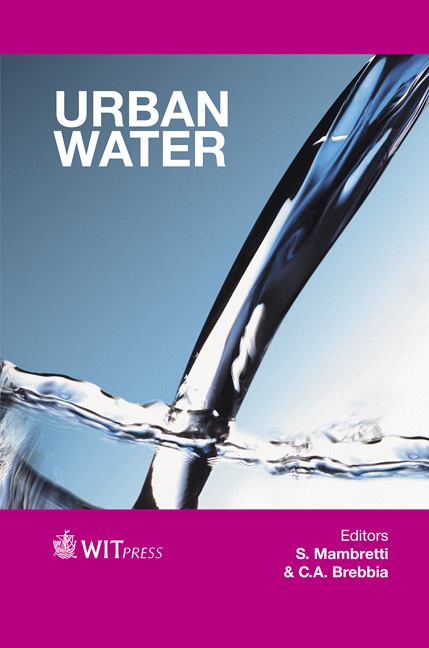Measuring Metals Release And Biological Activity In Decades Old Cast Iron Pipes Subjected To A Disinfectant Change
Price
Free (open access)
Transaction
Volume
122
Pages
9
Published
2012
Size
873 kb
Paper DOI
10.2495/UW120121
Copyright
WIT Press
Author(s)
J. Heberling & P. Barron
Abstract
Measuring metals release and biological activity in decades old cast iron pipes subjected to a disinfectant change J. Heberling & P. Barron Birmingham Water Works Board, Birmingham, Alabama, USA Abstract In an attempt to anticipate future, stricter disinfection by-products (DBPs) regulation, the Birmingham Water Works Board (BWWB) investigated the feasibility of replacing the primary disinfectant chlorine with chloramines. The purpose of this study was to determine if chloramines usage may increase lead and other metal residuals, which increase metal concentrations above healthy limits. Other utilities have observed an apparent correlation between a disinfectant switch from chlorine to chloramines and increased lead and other metal residuals. A pipe rack was constructed with cast iron and lead piping and brass fixtures. The rack was designed to mimic a distribution system with twelve-hour flow (approximately 3000 gallons) and twelve-hour stagnation. The finished water was introduced to the pipe rack. Three corrosion inhibitors were tested before the introduction of chloramines to the pipe rack. During a 2.5-year period, the cast iron pipes were sampled weekly for an array of parameters to determine degree of metal leaching. The metals sampled for were iron (total and dissolved), lead (total and dissolved), copper, and aluminum. These metals are common constituents in pipe scale and, if present in sampled water, can indicate pipe corrosion. Increased iron corrosion can lead to \“red water,” which is aesthetically undesirable. In addition, stagnant water in the cast iron pipes was sampled for heterotrophic plate counts (HPC) to indicate biological activity. These parameters were selected to measure metals concentrations leaching into water and the potential corrosivity of the water itself. Keywords: corrosion inhibitors, chloramines, polyphosphate, orthophosphate, \“red water”.
Keywords
corrosion inhibitors, chloramines, polyphosphate, orthophosphate, \“red water”.





